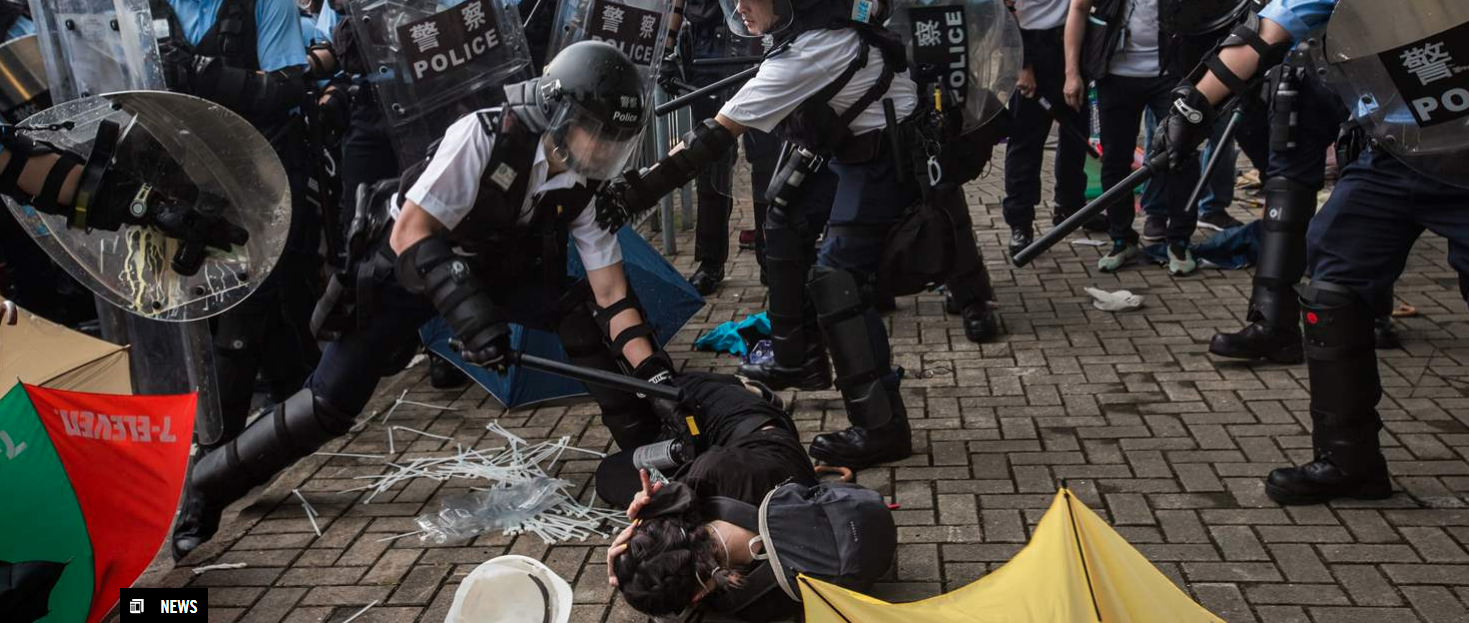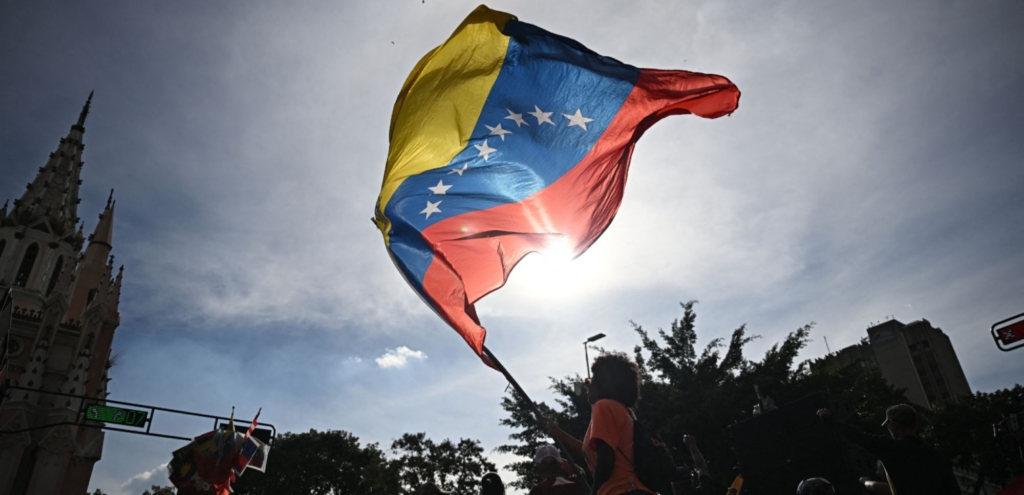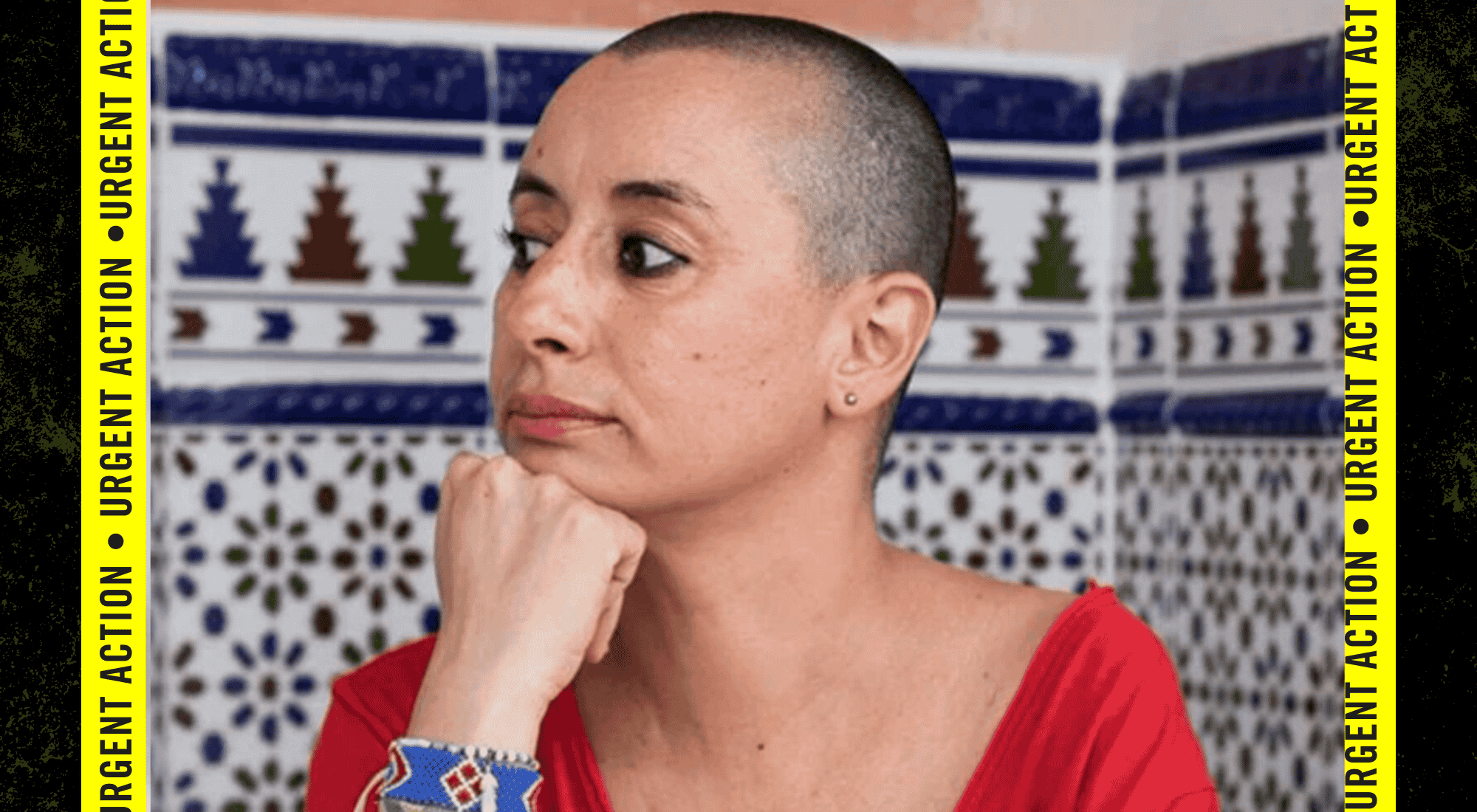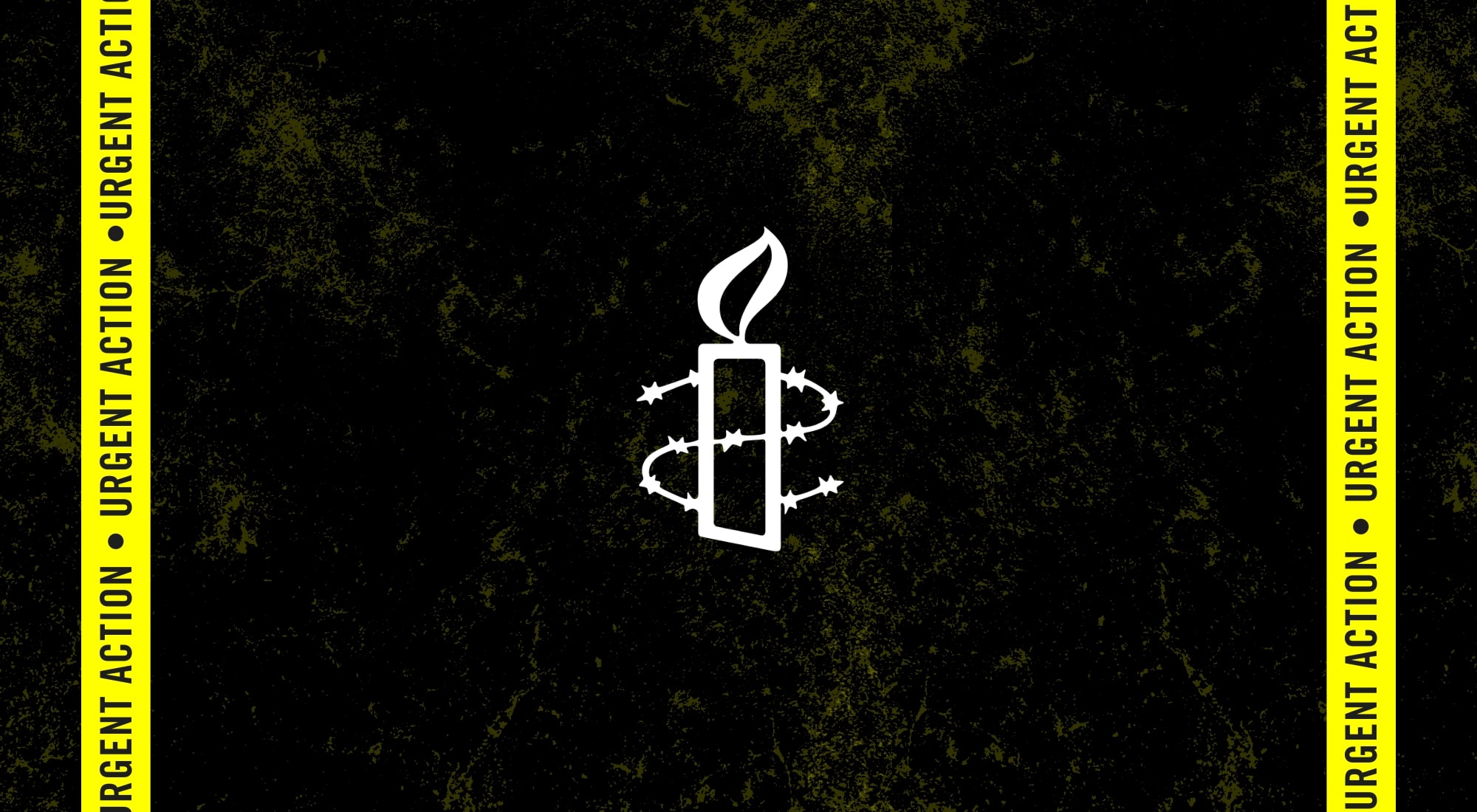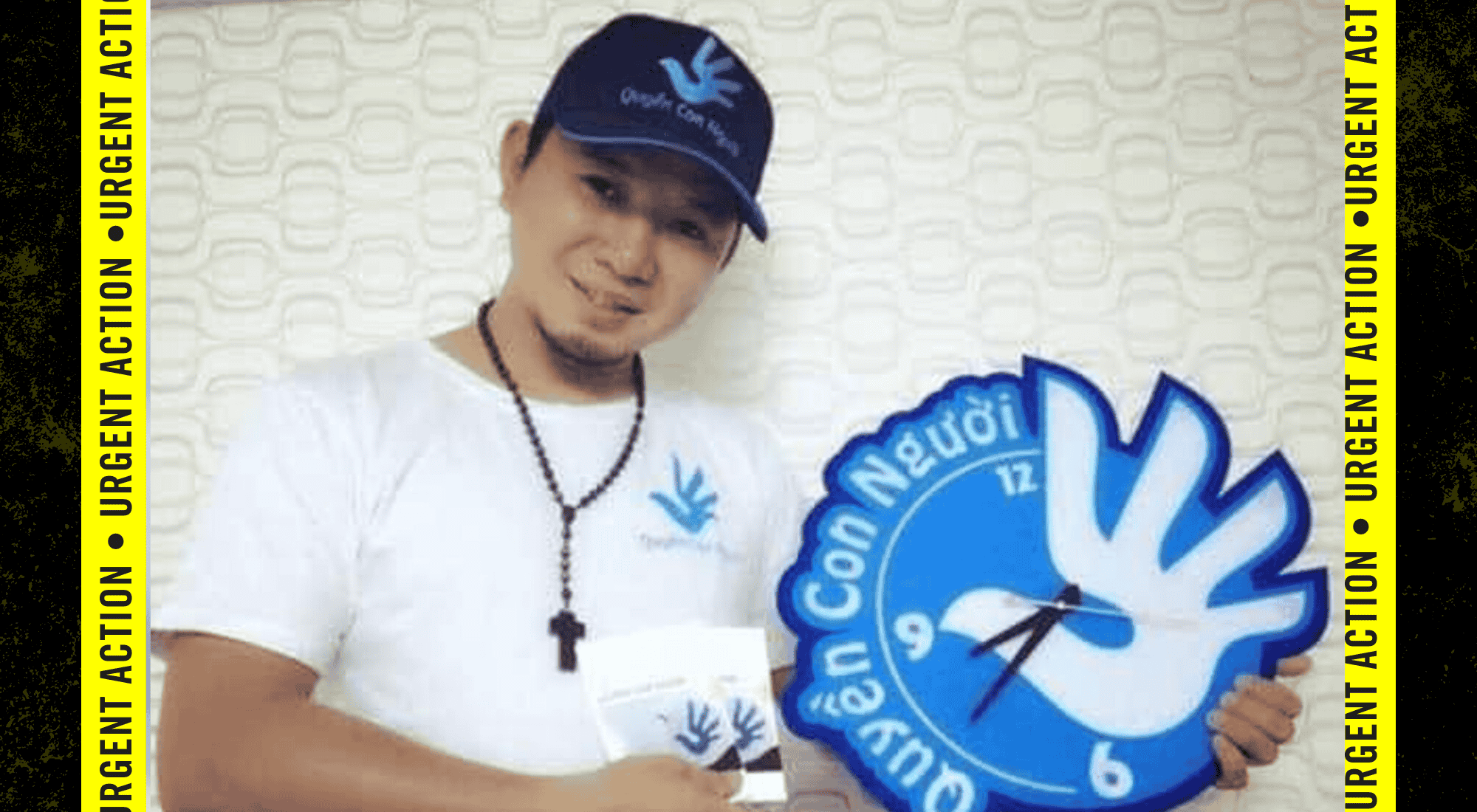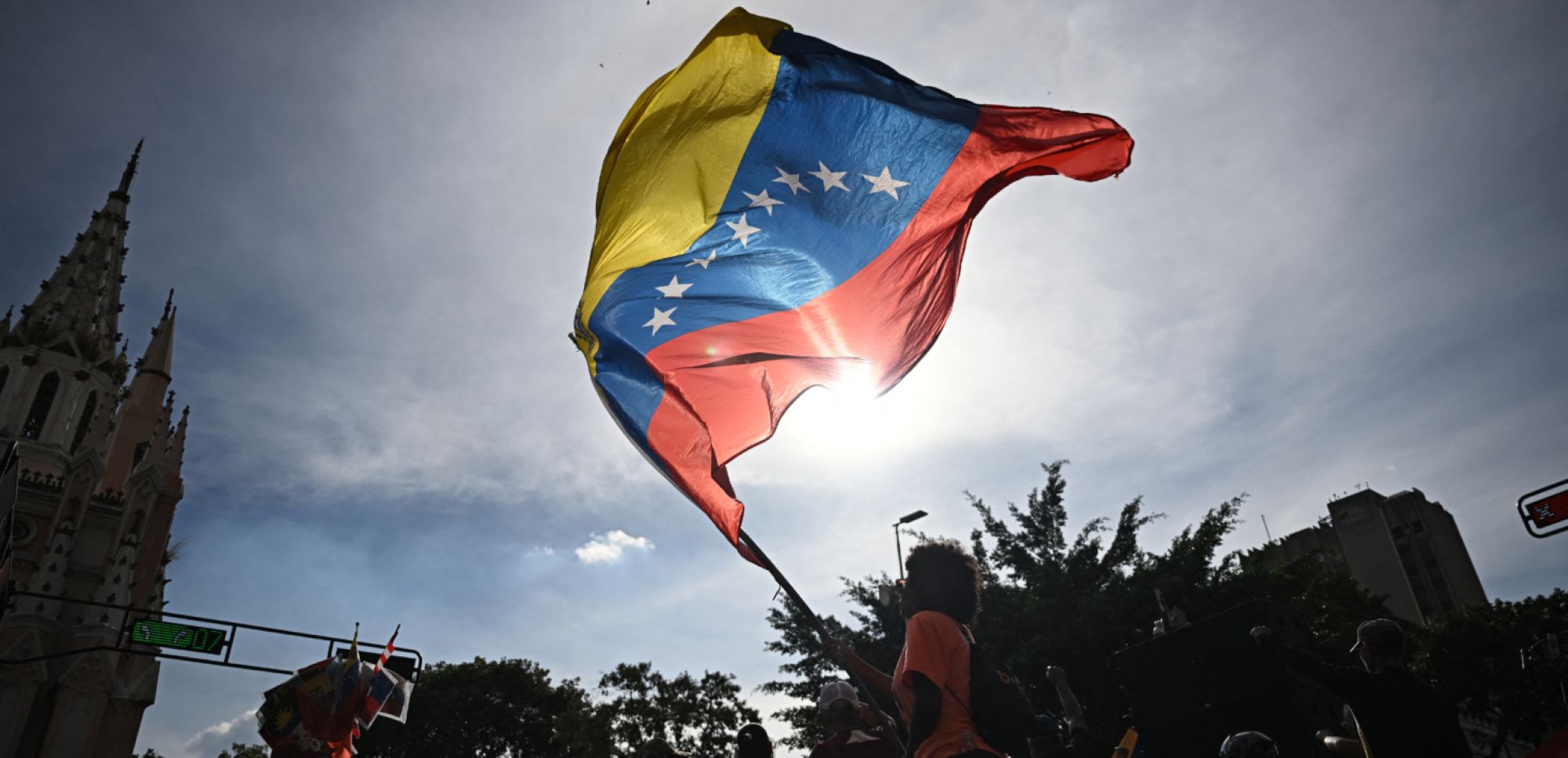A new Amnesty International field investigation has documented an alarming pattern of the Hong Kong Police Force deploying reckless and indiscriminate tactics, including while arresting people at protests, as well as exclusive evidence of torture and other ill-treatment in detention.
After interviewing nearly two dozen arrested persons and gathering corroborating evidence and testimonies from lawyers, health workers and others, the organization is demanding a prompt and independent investigation into the violations, which appear to have escalated in severity since the mass protests began in June.
“The Hong Kong police’s heavy-handed crowd-control response on the streets has been livestreamed for the world to see. Much less visible is the plethora of police abuses against protesters that take place out of sight,” said Nicholas Bequelin, East Asia Director at Amnesty International.
“The evidence leaves little room for doubt – in an apparent thirst for retaliation, Hong Kong’s security forces have engaged in a disturbing pattern of reckless and unlawful tactics against people during the protests. This has included arbitrary arrests and retaliatory violence against arrested persons in custody, some of which has amounted to torture.”
More than 1,300 people have been arrested in the context of the mass protests that started over proposed legislative amendments that would have allowed for extradition to mainland China. While the vast majority of protesters have been peaceful, there has been violence, which appears to be escalating alongside excessive use of force by the police. Most people who spoke to Amnesty International requested anonymity, citing fears of reprisals from the authorities amid a climate of impunity.
Interviews of arrested persons and lawyers by Amnesty International show that police violence most commonly occurred before and during arrest. In several cases, detained protesters have also been severely beaten in custody and suffered other ill-treatment amounting to torture. In multiple instances, the abuse appears to have been meted out as “punishment” for talking back or appearing uncooperative.
A man detained at a police station following his arrest at a protest in the New Territories in August told Amnesty International that after he refused to answer a police intake question, several officers took him to another room. There, they beat him severely and threatened to break his hands if he tried to protect himself.
“I felt my legs hit with something really hard. Then one [officer] flipped me over and put his knees on my chest. I felt the pain in my bones and couldn’t breathe. I tried to shout but I couldn’t breathe and couldn’t talk,” he said.
As the man was pinned to the ground, a police officer forced open the man’s eye and shined a laser pen into it, asking, “Don’t you like to point this at people?” This was an apparent reprisal for some protesters’ use of laser pens amid the protests. The man was later hospitalized for several days with a bone fracture and internal bleeding.
Amnesty International interviewed a different man who was arrested on another day in August in Sham Shui Po. The arresting officer repeatedly asked him to unlock his phone for inspection; angry at the refusals, the officer threatened to electrocute the man’s genitals. The man told Amnesty International he was “scared” the officer might follow through, “as the times are so crazy, I suppose anything is possible.”
While detained in a police station common room, the same man witnessed police officers force a boy to shine a laser pen into his own eye for about 20 seconds. “It seems he used the laser pen to shine at the police station,” the man recalled. “They said, ‘If you like to point the pen at us so much, why don’t you do it to yourself?’”
Amnesty International also documented a clear pattern of police officers using unnecessary and excessive force during arrests of protesters, with anti-riot police and a Special Tactical Squad (STS), commonly known as “raptors”, responsible for the worst violence. Almost every arrested person interviewed described being beaten with batons and fists during their arrest, even when they posed no resistance.
A young woman arrested at a protest in Sheung Wan in July was one of many protesters who described being clubbed from behind with a police baton as she was running away from a police charge; she was knocked to the ground and police officers continued to beat her after her hands were zip-tied.
Similarly, a man arrested at a protest in Tsim Sha Tsui in August described retreating and then running as police charged at the assembled protesters. He told Amnesty International that “raptors” caught up to him and hit him from behind with their batons on his neck and shoulder. He said:
“Immediately I was beaten to the ground. Three of them got on me and pressed my face hard to the ground. A second later, they kicked my face … The same three STS kept putting pressure on my body. I started to have difficulty breathing, and I felt severe pain in my left ribcage … They said to me, ‘Just shut up, stop making noise.’”
According to medical records, he was hospitalized for two days and treated for a fractured rib and other injuries. In more than 85% of cases investigated by Amnesty International (18 out of 21), the arrested person was hospitalized as a result of their beating, with three of them spending at least five days in a hospital.
“Time and again, police officers meted out violence prior to and during arrests, even when the individual had been restrained or detained. The use of force was therefore clearly excessive, violating international human rights law,” said Nicholas Bequelin.
Amnesty International also documented multiple instances of arbitrary and unlawful arrests, as well as numerous cases where police denied or delayed access to lawyers and medical care to detainees. Providing timely access to lawyers, family members and medical professionals for persons in custody is an important safeguard against torture and other ill-treatment.
The findings come after a group of UN experts expressed alarm about the Hong Kong police’s pattern of attacks on and arrests of protesters.
“Given the pervasiveness of the abuses we found, it is clear that the Hong Kong Police Force is no longer in a position to investigate itself and remedy the widespread unlawful suppression of protesters. Amnesty International is urgently calling for an independent, impartial investigation aimed at delivering prosecutions, justice and reparation, as there is little trust in existing internal mechanisms such as the Independent Police Complaints Commission (IPCC),” said Nicholas Bequelin.
Notes to editors
Please see additional background and analysis related to this investigation below.
On 24 September Amnesty International will be following this field investigation with a new report analyzing the root causes of the Extradition Bill protests.
ADDITIONAL BACKGROUND AND ANALYSIS
From 5 to 12 September, Amnesty International delegates carried out 38 interviews, including with 21 people arrested in the context of protests, as well as with lawyers representing arrested persons; medical professionals who had treated arrested persons; and other first-responders working the front lines of the protests. Amnesty International reviewed photographic and video evidence of many specific events described during interviews, in addition to video, including livestream, of other protests and police actions in response to them. Delegates also observed firsthand an often indiscriminate and reckless police response to protesters, onlookers and members of the media during incidents in Mong Kok on the night of 7 September and in Causeway Bay on the night of 8 September.
Excessive Force During Arrest
Amnesty International documented a clear pattern of police officers using excessive force while arresting people at protests. The worst abuses were typically carried out by anti-riot police and members of the Special Tactical Squad (STS), the latter referred to commonly as “raptors”. Almost every arrested person interviewed described being beaten with batons and fists during the arrest, even when they were not resisting and often already restrained.
A young woman arrested at a protest in Sheung Wan in July described, like many others, police clubbing her from behind with a baton as she ran away from a police charge; she was knocked to the ground and police officers continued to beat her after her hands were zip-tied.
Similarly, a man arrested at a protest in Tsim Sha Tsui in August described retreating and then running away as police charged at the assembled protesters. He told Amnesty International that STS police caught up to him and hit him from behind with their batons on his neck and shoulder. He recalled:
Immediately I was beaten to the ground. Three of them got on me and pressed my face hard to the ground. A second later, they kicked my face; everything I had on my face, including my glasses, flew off … The same three STU kept putting pressure on my body. I started to have difficulty breathing, and I felt severe pain in my left ribcage … They said to me, “Just shut up, stop making noise. You came out; you’re a hero, right?”
The man eventually spent two days in the hospital and was diagnosed with a fractured rib, among other injuries, according to medical records seen by Amnesty International.
Other arrested persons interviewed by Amnesty International had injuries including multiple fractures to an arm; a fractured bone on the face; a cracked tooth; and bleeding from one or more head wounds that required sutures. One protester fell unconscious during his arrest as a bystander yelled at the police to calm down, according to video reviewed by Amnesty International. Another protester was hit in the eye with a baton while being arrested, and then a different police officer pepper-sprayed the injured eye after the man was restrained. In most documented cases, arrested persons provided photographs, video evidence, and/or hospital papers to corroborate the reported injuries.
Of the 21 arrested persons interviewed, 18 were admitted to a hospital either for injuries or illness related to their arrest and detention. (Amnesty International did not collect data on the overall rate of hospitalization and was specifically investigating incidents of police abuse, and therefore draws no inference about the overall rate of serious injury among those arrested). Most spent about one or two days in the hospital. Five spent three or more days, including three who spent at least five days. Medical staff independently described to Amnesty International treating many of the same injuries that arrested persons had described in interviews.
Police have had a reasonable basis to arrest some protesters, including for throwing bricks, bottles and Molotov cocktails at police; for property damage; and, in at least a few instances, for assaulting a police officer. But under international human rights law and standards, police are permitted to only use force where absolutely necessary and proportionate to the legitimate objective they are trying to achieve. The use of force should be aimed at stopping violence, while minimizing injury and preserving the right to life.
In the cases described above, police officers instead caused physical injury before, during and after arrests. The use of force prior to and during arrest in many cases amounted to excessive use of force, violating international human rights law. The use of beatings and pepper spray on individuals who are already in custody amounts to torture and other ill-treatment. Arrested persons, lawyers, medical personnel and other witnesses to protests all said the level of police violence has worsened steadily since the mass protests began in June; that deterioration is likewise borne out by a review of video evidence.
Cases of Torture or Other Cruel, Inhuman, and Degrading Treatment in Detention
Most of the arrested persons interviewed by Amnesty International said that, after the initial beating before or during the period of arrest, the police did not commit further physical violence against them or against others with whom they were held. In a few cases, however, police abuse continued in detention, including in police vehicles, police stations and other holding facilities. Several such cases amount to torture or other cruel, inhuman and degrading treatment, absolutely forbidden under international law.
A man detained at a police station following his arrest at a protest in the New Territories in August told Amnesty International that after he refused to answer a police intake question, several officers took him to another room. There, they beat him severely and threatened to break his hands if he tried to cover himself where they were striking. He recalled:
I felt my legs hit with something really hard. Then one flipped me over and put his knees on my chest. I felt the pain in my bones and couldn’t breathe. I tried to shout but I couldn’t breathe and couldn’t talk.
As the man was pinned to the ground, a police officer then used his fingers to force open the man’s eye and shine a laser pen into it, asking, “Don’t you like to point this at people?” The man was later hospitalized for several days with a bone fracture and internal bleeding.
Amnesty International interviewed a different man who was arrested on another day in August in in Sham Shui Po. The arresting officer requested repeatedly that the man unlock his phone for inspection; angry at the refusals, the officer threatened to electrocute the man’s genitals. The man told Amnesty International he was “scared” the officer might follow through, “as the times are so crazy, I suppose anything is possible.”
Detained in a police station common room, the same man witnessed police officers force a boy to shine a laser pen into his own eye for about 20 seconds. “It seems he used the laser pen to shine at the police station,” the man recalled. “They said, ‘If you like to point the pen at us so much, why don’t you do it to yourself?’”
Two people described separate incidents in which they were zip-tied and detained on the street in a small group. They said they had to inhale tear gas for an extended period, as police officers had removed their masks during the arrest and other police nearby continued to fire tear gas indiscriminately at other protesters. In another case, an arrested person said he requested to go to the hospital for an arm injury suffered during the arrest. A police officer grabbed hard where the man indicated pain, saying, “Is this the spot?”
Lawyers interviewed by Amnesty International provided a similar account of the situation, saying that while most of their clients arrested at protests had not been physically mistreated after the initial arrest, there were exceptions. Two lawyers each mentioned a client, separate from those referenced above, whom police officers had beaten in a station severely enough that the person was hospitalized for several days.
In several instances, as in the first case described above, police officers appear to have inflicted ill-treatment in detention as punishment for talking back or for being perceived as particularly uncooperative.
Body Searches
In one incident documented by Amnesty International, a female police officer forced a woman to strip completely and go through a full body search after she talked back to the officer; the officer mocked and belittled the woman.
The vast majority of arrested persons interviewed by Amnesty International had not had to go through a comparable search during the same phase of their detention, and several criminal lawyers in Hong Kong described such a strip search as inconsistent with procedure. The woman forced to go through the strip search felt degraded and continued, weeks later, to suffer distress.
Body searches affect the right to privacy and the inherent dignity of the person and therefore should not be carried out lightly by law enforcement officials. Police should only carry out body searches professionally, by a person of the same sex and in the least intrusive manner possible, thus limiting as far as possible the inherently humiliating character of the search.
Delayed Access to Medical Care
Despite the serious injuries some arrested persons have suffered, police often denied prompt access to medical care. Among those interviewed by Amnesty International, it was common for police to delay calling or securing an ambulance until five to 10 hours after the injury and after the person first requested to go to a hospital.
In general, arrested persons described police officers telling them that they needed to go through processing – including fingerprinting, being photographed and having a statement taken – before going to the hospital. Police appeared to use people’s need for medical care to pressure them into giving a statement without a lawyer present, as discussed more below.
One man arrested at a protest in Causeway Bay in August recalled bleeding from his nose and mouth, as a result of being beaten during his arrest, as police held him in a detention facility. He told Amnesty International, “I was spitting blood, constantly. They said, ‘If you help me take the statement quickly, you can go [to the hospital].’ … Four or five hours later, after I assisted their work, I was taken.” He spent two days in the hospital.
Another man, who ultimately spent more than a week in the hospital for multiple injuries to his face and body sustained during his arrest, was held in a police station for around seven or eight hours before being transferred to a hospital. He, too, was first required to give a statement to police. He said the police would not let him wipe off blood and dirt from his buttocks, a result of several officers dragging him across pavement during his arrest, as another officer struck the man with a baton.
In the most egregious such case documented by Amnesty International, a man suffered multiple fractures to his arm during his arrest in August. He immediately asked to be taken to the hospital, but it was more than five hours later before police did so – only after they had transported him for more than an hour to a detention facility and processed him.
During the arrest, police officers zip-tied the man’s hands behind his back. “It was extremely painful,” he recalled. “I told them I had broken my arm, but they didn’t bother.” He remained zip-tied for several hours, as he complained of intense pain. Two medical professionals told Amnesty International that the nature of the injury is extremely severe and rare, and possible only from severe and intense beating.
Denying or unreasonably delaying prompt and adequate medical care to a person who is ill or seriously injured is a clear violation of a person’s right to health. In some cases, the denial of medical care itself may amount to torture and other forms of ill-treatment, especially if delayed or denied for the purposes of extracting a statement or confession from the injured detainee.
In a few cases documented by Amnesty International, police officers did send arrested persons who were injured or ill to the hospital prior to taking them to detention and processing them – demonstrating the police can do so when willing. As with other abuses, delays in accessing medical care appear to be worsening, as the police grow more frustrated and resort to increasing violence
Finally, many arrested protesters described police officers refusing to leave them alone when speaking with medical staff about their pain and what happened. Due to the lack of privacy, several told Amnesty International that they had lied to doctors about what caused their injuries – ascribing serious injuries to falling rather than to police beatings, for example – because they were afraid of repercussions for discussing police abuse in front of officers.
Delayed Access to Counsel
In cases of arrest linked to the protests, the police often delay or deny people’s access to counsel. Similar to medical care, the delays tend to range from several hours up to half a day, despite repeated requests from arrested persons to see or call a lawyer – and repeated requests from lawyers at places of detention to have access to those arrested.
Arrested protesters almost all told Amnesty International that they requested to contact a lawyer immediately upon arrest. They said police ignored the requests, telling the person to wait or that it would happen later, after the initial processing. At times, police officers gave other excuses. For example, several people held on 11 and 12 August at the San Uk Lang detention facility near the border with mainland China independently recalled police officers there saying they could not contact a lawyer because there was no phone network.
One person held at North Point police station after being arrested at a protest in August said he repeatedly asked to call a lawyer. He said a police officer told him the phone was busy, even though the arrested person could see the phone and that no one was using it. He ultimately was not able to see a lawyer until around 12 hours after his arrest – eight hours after his request by the phone, and after police took a statement and did a search of his home.
Lawyers interviewed by Amnesty International similarly described delayed access to arrested persons. They said the delays are fundamentally different from how the criminal justice system in Hong Kong normally works when people are arrested for crimes, including violent crimes. Several believed the police’s aim was to delay access to counsel until after taking an arrested person’s statement and that police officers were employing different strategies to achieve that.
Several lawyers said they were spending hours driving around Hong Kong trying to find where arrested persons were taken on any given night, as they often are not being detained in the nearest police station. The police force is stretched thin by the scale of the protests and, on many nights, the number of people arrested in a given location is beyond the normal holding capacity of one police station. But while that might justify detaining people in sites other than the police station nearest to the arrest, lawyers said the real problem is that the police are at times not forthcoming with information about where a detainee is, even when the lawyer calls or goes to a police station.
Two lawyers also said that, as of late July and August, the police have taken to declaring a police station an “operations area” or under “station defence”. They said the designation often lasts for three hours and means no one – including lawyers – is allowed in, even when people are detained there. While there may be circumstances in which restricting the public’s access to a police station is warranted – many protests in August and September have taken place outside police stations and include some use of violence by protesters – it cannot be used as a ploy to deny people’s right to counsel. The police could, for example, continue granting access to a lawyer during such periods; take arrested persons to other stations not under restriction and inform counsel; or not ask further questions of a detainee once he or she has requested counsel, no matter how long “station defence” continues.
Access to lawyers is an important safeguard for many human rights, such as the right to a fair trial and ensuring the detainee’s rights are respected in custody, including the right to access medical care when needed as well as protection from coerced confessions and torture and other ill-treatment. Denial of this right amounts to incommunicado detention and is in itself a form of ill-treatment. Lawyers and family members of detained persons are entitled to be promptly informed of where the detained person is being held and lawyers and independent medical professionals should have unrestricted access to detainees.
Policing Assemblies and Arbitrary Arrests
The vast majority of individuals who have participated in the Hong Kong protests have acted peacefully, and the police must find ways of facilitating the assembly for those who want to assemble peacefully, while stopping those who engage in violence. The Hong Kong police may have a legitimate and lawful basis to arrest individuals who are engaging in violence toward others, including police officers, or who are damaging or destroying property. No person should be arrested solely for exercising rights to peaceful assembly and freedom of expression. In cases where there are grounds to arrest people engaging in violence, law enforcement officials must only use such force as is necessary, reasonable and proportionate.
Local residents and curious bystanders who are neither participating in a protest nor engaging in any violence have often been caught up in the police response in a given area. At protests on 7 and 8 September that Amnesty International monitored, normal life continued less than a block from a heavy police presence in response to protests. Nearly 100 journalists, first-aid providers and other self-identified responders, all wearing distinctive bright yellow vests, stood near the “frontline”. They often greatly outnumbered the protesters engaging the police. In several instances, no protesters appeared present, only police and the marked observers. When the police left the scene, normal life immediately resumed.
When violence or property damage has occurred, the police have responded with use of force that has been at times excessive and indiscriminate. For example, Amnesty researchers directly observed police use pepper spray and fire “pepper balls” at journalists wearing identifying badges and fire tear gas grenades into largely empty streets where no protesters were present. The tear gas clouds drifted into areas with large concentrations of pedestrians. Even when tear gas is deployed against protesters, some of who might be engaging in violence, such tactics are indiscriminate and often affect people with no connection to the protests. In another observed case, the police raised a warning flag, indicating they would fire tear gas, after already launching the tear gas grenades.
The use of these indiscriminate, less lethal weapons may be counter-productive if the aim is to disperse a crowd or de-escalate violence. According to the UN Basic Principles on the Use of Force and Firearms, the deployment of non-lethal incapacitating weapons should be carefully evaluated in order to minimize the risk of endangering uninvolved persons, and the use of such weapons should be carefully controlled. This principle needs to be taken into account when authorities are determining what equipment should be used in public assemblies that may affect all persons in an area, including for the purpose of dispersing an assembly. Police also have a responsibility to engage in dialogue and to communicate with protesters, with an aim to facilitate peaceful assemblies and to minimize the use of force.
Amnesty International interviewed two young women arrested arbitrarily in separate incidents in August when out to get food. In another incident in August, a young man went into a public bathroom while out with his girlfriend; when he emerged, anti-riot police were nearby. They arrested and beat him when he ran out of fear. He said he felt he was treated better than others detained at the police station because he was wearing white – not the all-black that many protesters have taken to wearing, including after several suicides and other deaths during the time of the protest movement.
Most of the arrested people interviewed by Amnesty International did not know what behaviour they were engaging in that was considered suspicious or criminal at the time of arrest.
Arbitrary detention is prohibited in all circumstances. Detention is arbitrary when individuals are deprived of their liberty without a clear basis in law; where persons are detained solely for the peaceful exercise of certain human rights such as freedom of expression or association; or in cases of sufficiently serious violations of the right to fair trial.
Law enforcement officials often have discretion whether to intervene in breaches of minor provisions of the law. This discretion needs to be applied carefully when policing assemblies. If police take action against certain minor offences, or arbitrarily detain persons not committing offences, it might provoke counter-reaction on behalf of individuals concerned and/or the rest of the public and ultimately contribute to a rapidly escalating and uncontrollable reaction by participants. The most appropriate approach might therefore be not to act immediately against the offender, possibly while taking measures that might allow for later prosecution of offences. At the same time, some minor offences, such as burning dustbins, may lead to agitation of the participants and provoke other people to do something similar or worse. Striking the right balance between enforcing the law and preventing a deterioration of public order presents an important challenge to the police.












